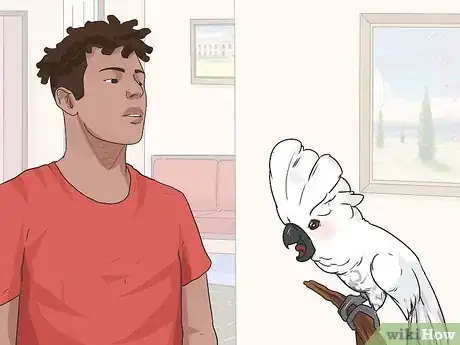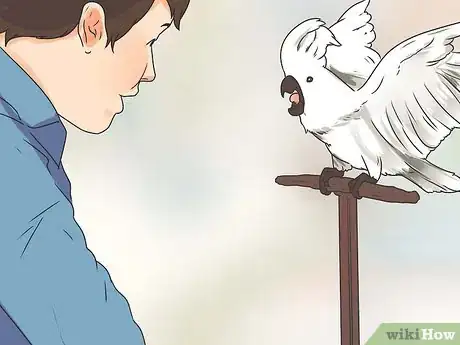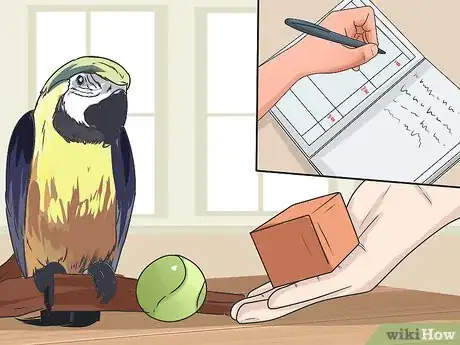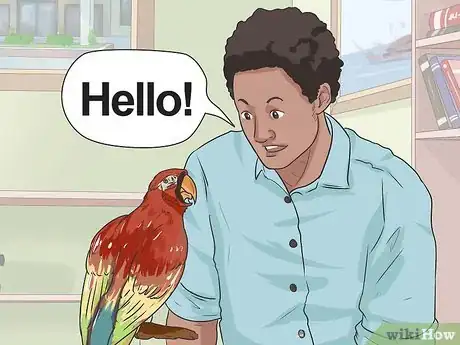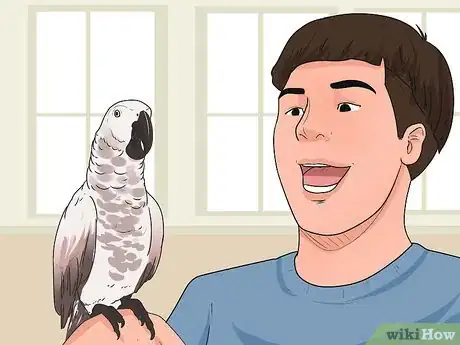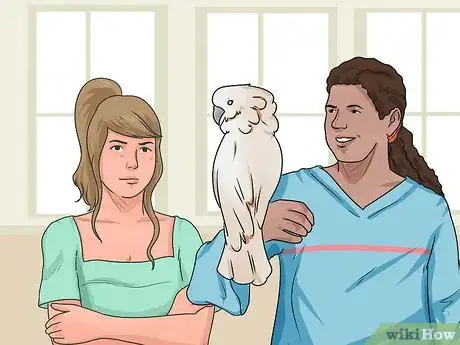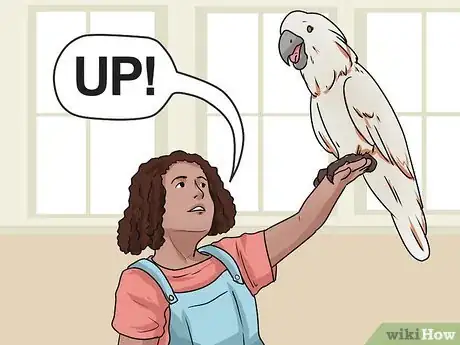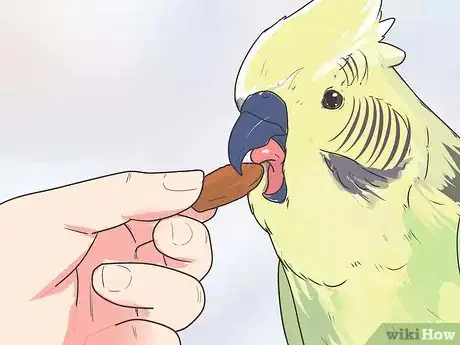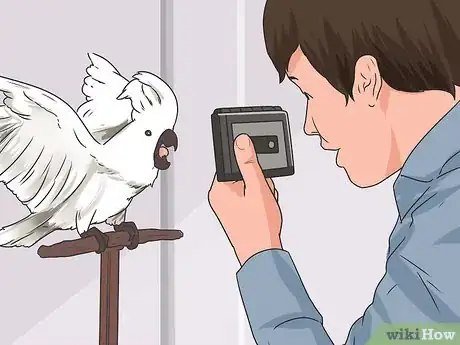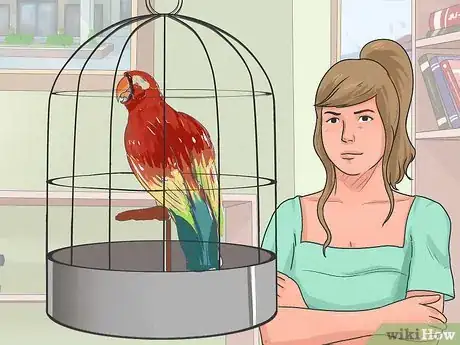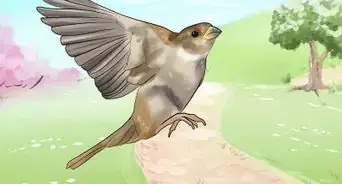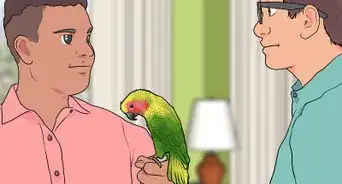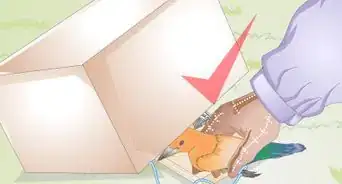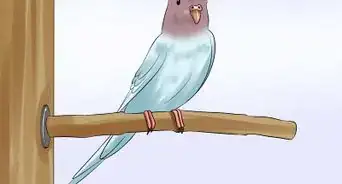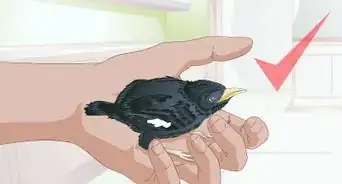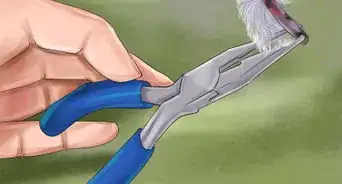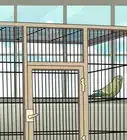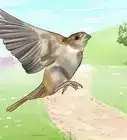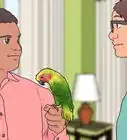This article was co-authored by Pippa Elliott, MRCVS. Dr. Elliott, BVMS, MRCVS is a veterinarian with over 30 years of experience in veterinary surgery and companion animal practice. She graduated from the University of Glasgow in 1987 with a degree in veterinary medicine and surgery. She has worked at the same animal clinic in her hometown for over 20 years.
There are 10 references cited in this article, which can be found at the bottom of the page.
wikiHow marks an article as reader-approved once it receives enough positive feedback. This article has 20 testimonials from our readers, earning it our reader-approved status.
This article has been viewed 327,135 times.
Teaching your bird to talk can be fun, even if it can only say a single word. All you need is a little dedication, focus, and time!
Steps
Preparing to Train Your Bird
-
1Learn about your bird. Not all birds can or will talk, so the first thing you should do is find out more about your bird. There isn't much point trying to teach a bird to talk if it's just going to whistle back at you. Some of the bird species that can learn to speak include:[1]
- Budgerigar
- Monk Parakeet
- Amazonian Parrots
- Indian Ringneck
- Quaker Parrot
- Eclectus
- Hill Myna
- African Grey
- Cockatiel
- Cockatoo
- Blue Gold Macaw
-
2Build a relationship with your bird. Birds that are capable of speech are social animals. It is very important to develop a relationship by speaking to them often, so that it trusts you and grows accustomed to your voice. It is recommended to spend as much time as possible with the bird the first few months, speaking to it in gentle tones.[2]
- Make sure to play with your bird often, every day. These birds in the wild have many interactions each day, and they engage with lots of stimuli. Evolved for group life, these birds like to be well-socialized. Spending lots of time with your bird will help ensure you foster a good relationship.
EXPERT TIPDr. Elliott, BVMS, MRCVS is a veterinarian with over 30 years of experience in veterinary surgery and companion animal practice. She graduated from the University of Glasgow in 1987 with a degree in veterinary medicine and surgery. She has worked at the same animal clinic in her hometown for over 20 years.Veterinarian
 Pippa Elliott, MRCVS
Pippa Elliott, MRCVS
VeterinarianPippa Elliott, a licensed veterinarian, explains the hidden benefits of training: "Speak to your bird regularly to give them a chance to learn. However, if they decide not to speak, they will enjoy your company and be more content for the attention."
Advertisement -
3Plan your routine. Like training any animal, talking birds need short, frequent and regular training sessions. Make sure you build a plan such that you are able to give your bird the time and attention it needs in order to maximize its learning potential.
- Make a schedule.
- Limit training sessions to five minutes, two to five times a day.[3]
- Plan to work with your bird many times a day.
Training Your Bird
-
1Start with simple words.[4] Your bird will most likely learn simple words if you say them frequently. Pick expressions it is likely to hear often from you and other people, such as:
- hello
- bye-bye
- night-night
- your bird's name
-
2Encourage behavior that approximates speech. The psychologist B.F. Skinner taught pigeon to twirl and read by training them with baby steps. The imitation of a tones or parts of words, can be a first step in learning to imitate words. When training incrementally, it is important to continually raise the bar for your animal.[5]
-
3Hold the bird in front of your mouth when you teach it.[6] This will ensure that you have your bird's attention. The closeness will help build the relationship between you and your bird, as well as help focus the bird on the sounds you want them to make.
-
4Include a relative or friend. Experiments involving African Grey parrots, such as the infamous Alex, show that these birds learn better when two people are involved. This is called the model/rival method, wherein another speaker demonstrates the desired communication, and the bird learns to speak by observing articulations in context.[7]
- Escaped birds have even been found to teach wild birds to talk.[8] This highlights the social nature of how birds learn to communicate.
-
5Repeat certain words or phrases every time you do something with the bird. For example, say "Up" when you lift up your bird. This will teach it to associate a movement with certain words.[9]
-
6Make sure your bird has fun. Just like a child, birds benefit when learning from a sense of fun. By giving rewards, such as treats, and engaging with your bird in an excited way, it encourages the bird to enjoy this new language game.
- Rewards should be given immediately after the desire behavior is performed. This helps the bird know it is doing something correct.
- Avoid rewarding the bird when it is not talking. This will strengthen its desire to perform.
- Experiment. Maybe you're pet's less of a hello and more of a howdy kind of bird. If your bird does respond well to what or how you're trying to teach them, try something else.
- Give your bird a variety of sounds to produce, you not only make sure they're entertained, you stimulate their brain's natural tendency to learn with novelty. Studies have shown that song birds learn to sing in much the same way human babies learn to talk, through babble and vocal experimentation.[10]
-
7Consider playing recordings of words you want your bird to learn. Do this for up to 5 minutes at a time. Longer than this can cause boredom, overly straining the bird.
-
8Be patient. Learning capacities vary species to species and bird to bird. Some species can begin speaking after just a few months, and some take years to develop the capacity to speak.[11] Give your feathered friend some time to express themselves, and they'll return the respect.
Expert Q&A
Did you know you can get expert answers for this article?
Unlock expert answers by supporting wikiHow
-
QuestionIs it true that birds have specific moods where they want to talk?
 Pippa Elliott, MRCVSDr. Elliott, BVMS, MRCVS is a veterinarian with over 30 years of experience in veterinary surgery and companion animal practice. She graduated from the University of Glasgow in 1987 with a degree in veterinary medicine and surgery. She has worked at the same animal clinic in her hometown for over 20 years.
Pippa Elliott, MRCVSDr. Elliott, BVMS, MRCVS is a veterinarian with over 30 years of experience in veterinary surgery and companion animal practice. She graduated from the University of Glasgow in 1987 with a degree in veterinary medicine and surgery. She has worked at the same animal clinic in her hometown for over 20 years.
Veterinarian
-
QuestionAre there any devices that can help my bird talk?
 Pippa Elliott, MRCVSDr. Elliott, BVMS, MRCVS is a veterinarian with over 30 years of experience in veterinary surgery and companion animal practice. She graduated from the University of Glasgow in 1987 with a degree in veterinary medicine and surgery. She has worked at the same animal clinic in her hometown for over 20 years.
Pippa Elliott, MRCVSDr. Elliott, BVMS, MRCVS is a veterinarian with over 30 years of experience in veterinary surgery and companion animal practice. She graduated from the University of Glasgow in 1987 with a degree in veterinary medicine and surgery. She has worked at the same animal clinic in her hometown for over 20 years.
Veterinarian
References
- ↑ http://www.petmd.com/bird/top_tens/evr_bd_top10talking_birds
- ↑ http://www.nytimes.com/2015/03/15/magazine/how-to-teach-a-bird-to-talk.html
- ↑ http://www.highbeam.com/doc/1G1-303173513.html
- ↑ http://www.highbeam.com/doc/1G1-303173513.html
- ↑ http://www.smithsonianmag.com/science-nature/bf-skinner-the-man-who-taught-pigeons-to-play-ping-pong-and-rats-to-pull-levers-5363946/?no-ist
- ↑ http://www.2ndchance.info/parrottalk.htm
- ↑ http://randsco.com/_img/blog/0710/talking_with_alex.pdf
- ↑ http://www.telegraph.co.uk/news/earth/wildlife/8764221/Parrots-teach-wild-birds-how-to-talk.html
- ↑ https://books.google.com/books?id=Q5u19q5O1HQC&pg=PA129&lpg=PA129&dq=training+birds+with+hand+signal&source=bl&ots=F3_bBabRwX&sig=D-lpBdKLwc-UzCTK8wGskWNGaOg&hl=en&sa=X&ved=0CCMQ6AEwATgKahUKEwil3rfIzYHHAhUCLIgKHRGpAp0#v=onepage&q=training%20birds%20with%20hand%20signal&f=false
About This Article
To teach your bird to talk, start with simple, everyday words like “Hello” or your bird’s name. Make a schedule, and practice with your bird 2-5 times a day for about 5 minutes each time. Pair words with actions, such as lifting the bird when you say "Up!," and use treats to give your bird an incentive. For more tips about how to teach your bird to talk from our Veterinary reviewer, including how to build a relationship with your bird, read on!
